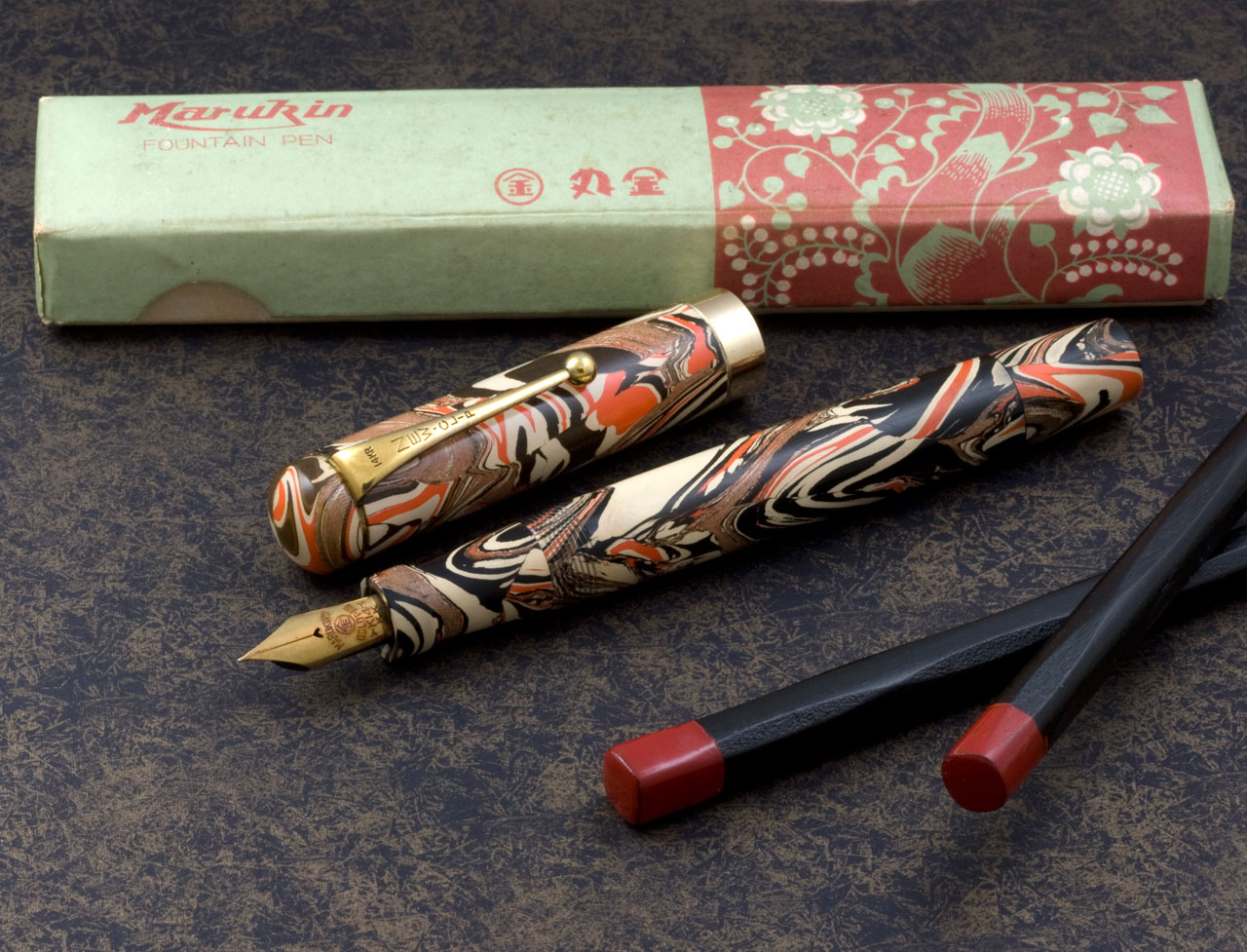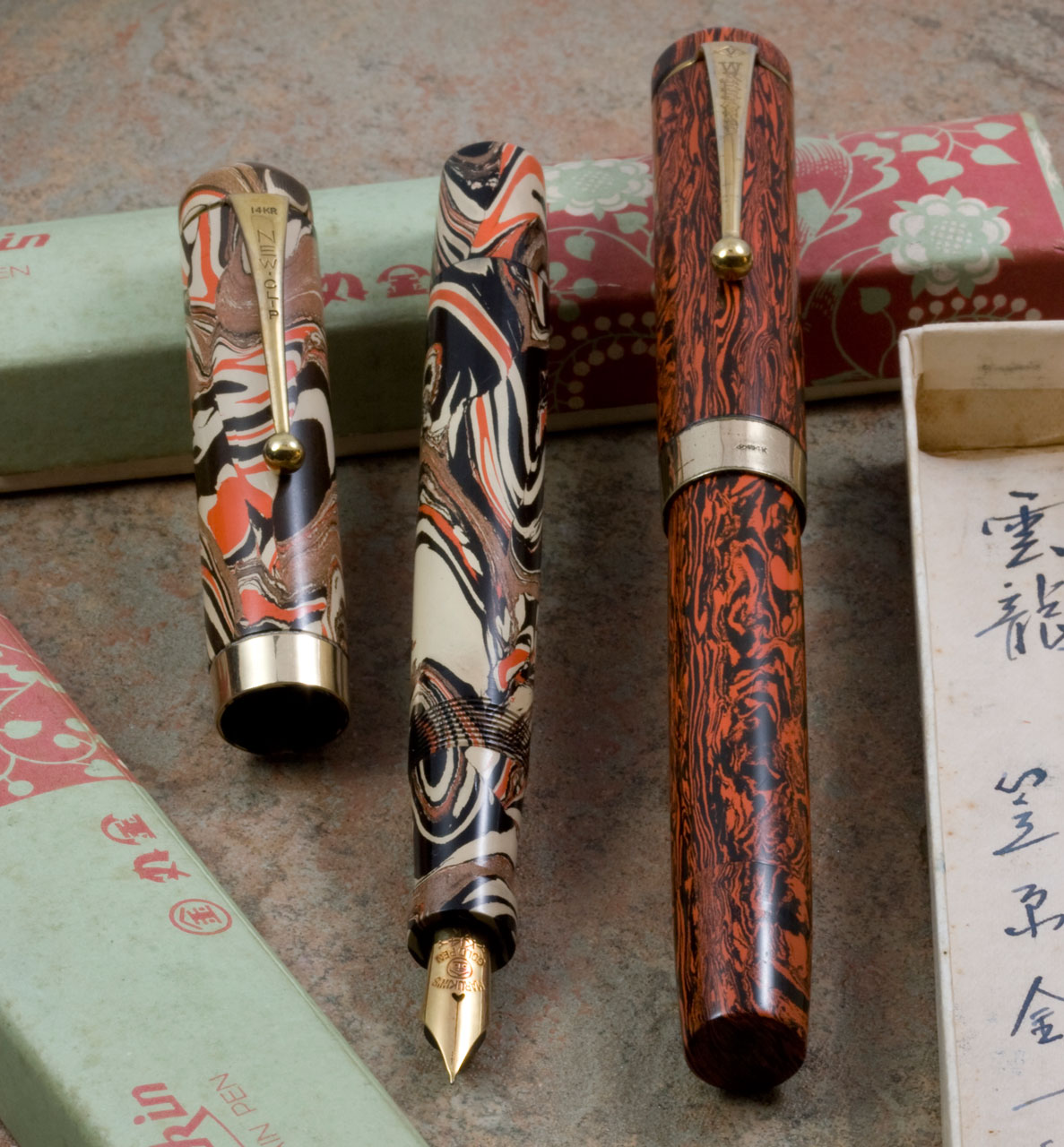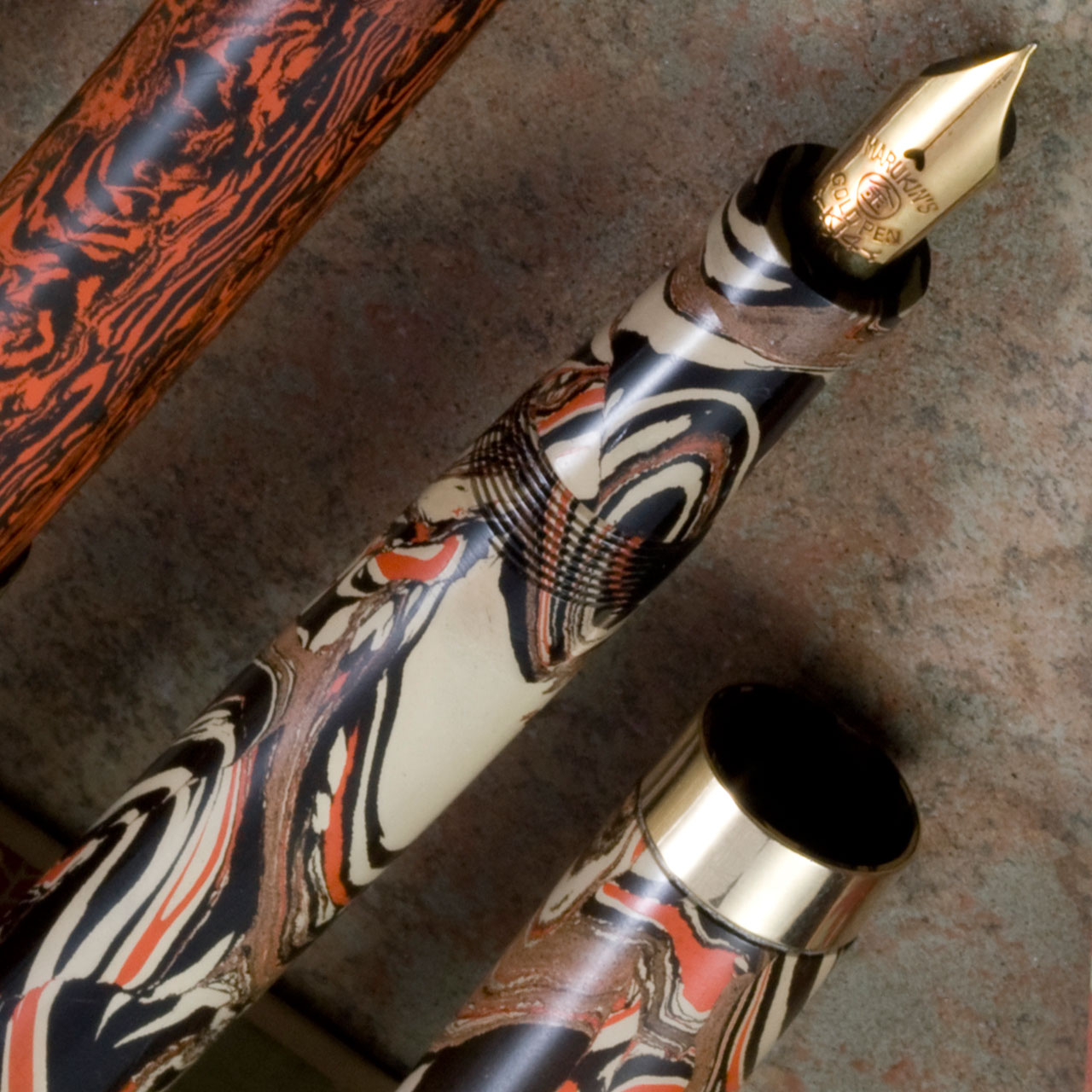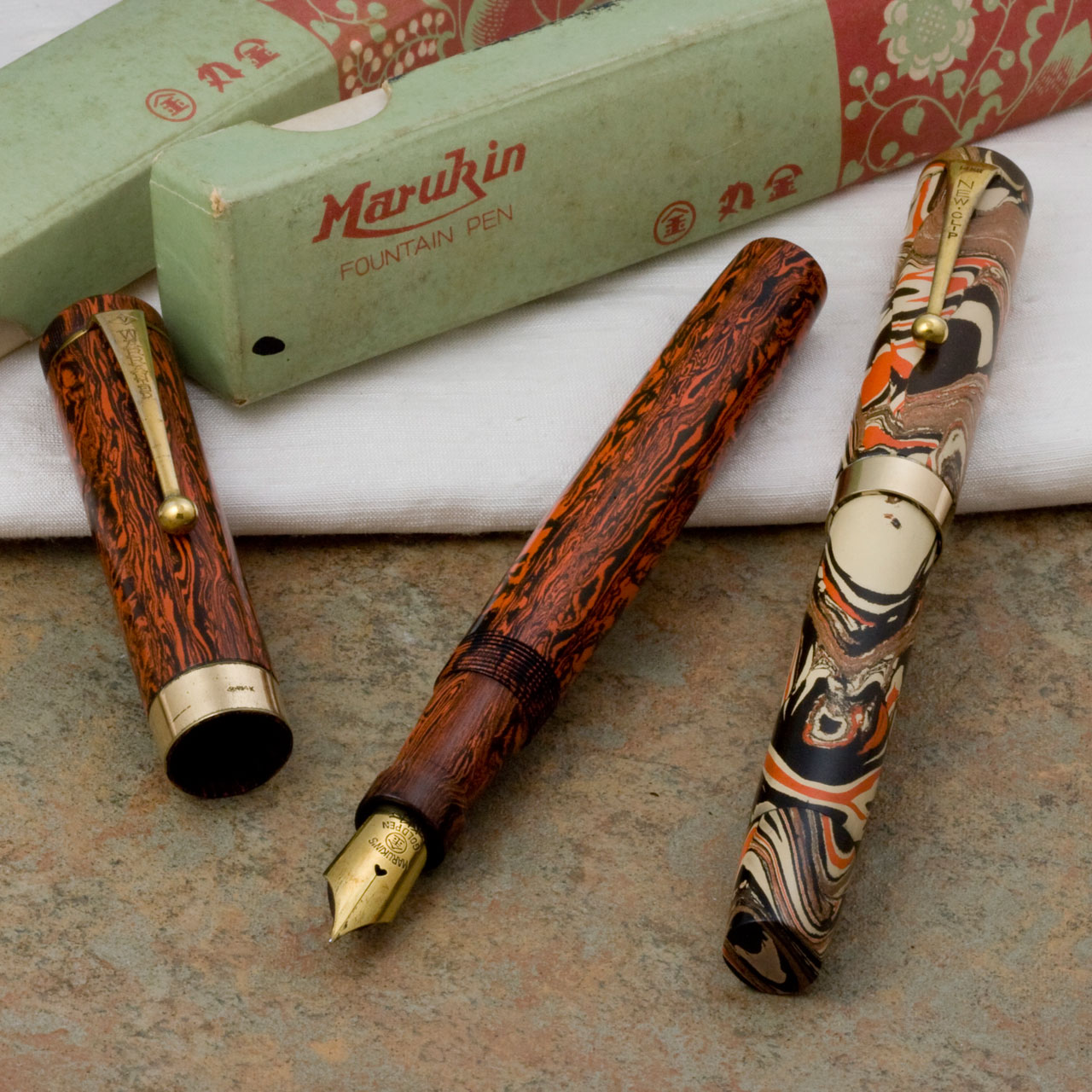Marukin hard rubber eyedropper pens c. 1932-1934
by Jim Mamoulides, May 6, 2017
 Marukin hard rubber fountain pen by Kinichiro Kasahara c. 1932-1934
Marukin hard rubber fountain pen by Kinichiro Kasahara c. 1932-1934
As in the United States, black hard rubber pens were the most common type in Japan in the early years of pen manufacture. When colorful hard rubber types were introduced, Japanese pen companies used them, though later than their American counterparts. A practice in Japan would be to put a single coat of urushi lacquer on the hard rubber surface to protect it.
Marukin was a Japanese maker of high-end fountain pens in the 1930s and the two pens in this article represent two of their hard rubber offerings, complete with the original boxes. According to the Winter 2006 Pennant article, “Collecting Japanese Pens,” by Stan Klemanowicz, these pens are somewhat rare and were made by Kinichiro Kasahara in 1932-1934 for Marukin. Note that the nib section of each pen is made of the same hard rubber material as the cap and barrel.
 Marukin hard rubber fountain pen by Kinichiro Kasahara c. 1932-1934
Marukin hard rubber fountain pen by Kinichiro Kasahara c. 1932-1934
Marukin made nibs and both of these pens have 14 karat gold nibs stamped MARUKIN’S GOLD PEN and with the Marukin logo, a soy sauce brewery symbol. The larger red and black pen has a very large 14 karat gold nib. The cream, black and red pen has an almost disproportionally smaller nib.
Both clips appear to be sourced from a pen parts maker as they have generic markings. The larger red and black pen's clip is stamped WARRANTED and the smaller cream, black and red pen is stamped NEW CLIP and includes 14KR stamped at the top. The warranted and 14KR markings probably indicate 14 karat rolled gold plate.
These are eyedropper pens with a shut-off valve at the end of the barrel. They fill by unscrewing the nib section and dripping ink into the barrel using a long eyedropper. The knob at the end of the barrel is attached to a long rod that extends inside the barrel up to the base of the feed in the nib section. When the knob is screwed flush with the end of the barrel, the rod cuts off ink flow to the feed, making it an ink shut off valve. The knob must be unscrewed slightly to allow ink to flow to the nib so the user can write.
 Marukin hard rubber fountain pens by Kinichiro Kasahara c. 1932-1934
Marukin hard rubber fountain pens by Kinichiro Kasahara c. 1932-1934
A feature of the larger red and black pen is its section is specially shaped to increase tactility when writing.
Not a lot is known of the history of Marukin pens. They may have only been made in the 1930s. The Marukin company continues today. It is in the food business. Marukin may have been part of Marukin Shoyu Co., a food maker of one of the top five soy sauce brands in Japan, based on Shodo Island. The Marukin Shoyu Co. logo matches the logo on the pen boxes.
 Marukin hard rubber fountain pens by Kinichiro Kasahara c. 1932-1934
Marukin hard rubber fountain pens by Kinichiro Kasahara c. 1932-1934
Performance
These two Marukin pens were loaned for photographs for Stan Klemanowicz's Winter 2006 Pennant article. Both pens are very well made. The hard rubber patterns on these pens are eye catching, especially because the cap top, cap, barrel, plunger knob and section are all made from the same material. I did not fill or write with either pen, as they were on loan for photos.
 Marukin hard rubber fountain pens by Kinichiro Kasahara c. 1932-1934
Marukin hard rubber fountain pens by Kinichiro Kasahara c. 1932-1934
These are excellent examples of high quality Japanese pens from the 1930s. They are very uncommon in the United States.
Acknowledgements
Thanks to Stan Klemanowicz for loaning these pens for photographs.
References
"Collecting Japanese Pens," by Stan Klemanowicz, Pennant, Winter 2006
Fountain Pens of Japan by Andreas Lambrou and Masamichi Sunami, © 2012 Andreas Lambrou Publishers, Epping, Essex, United Kingdom
Interact
Comments on this article may be sent to the editor, Jim Mamoulides


